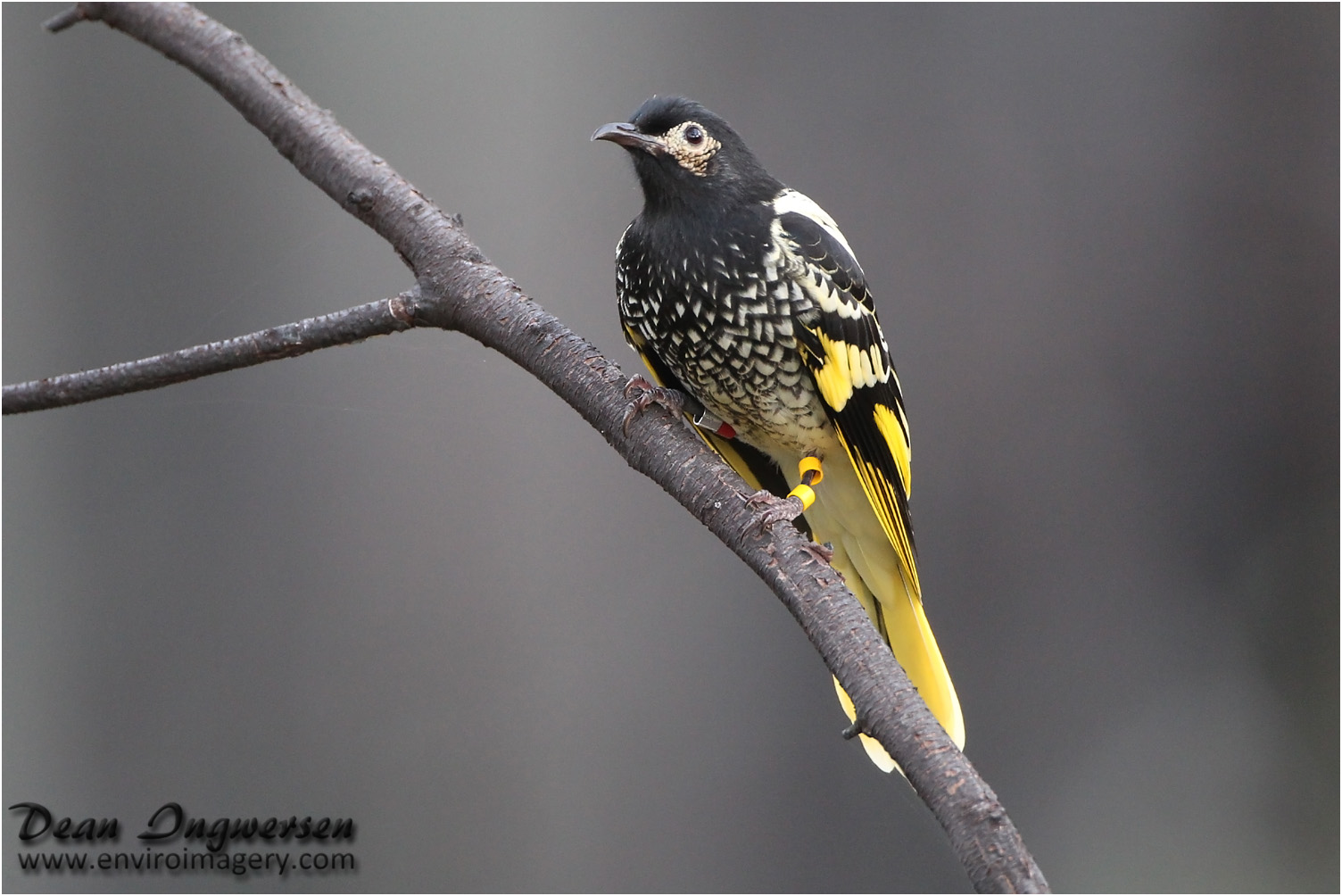Species information
Regent Honeyeater’s are a medium-sized honeyeater. They are quite distinctive, with a black head, neck and upper breast, while their back and breast are yellow with black scaling. Males have yellowish bare skin under their eyes. Females are smaller and have less black on their throat.
They were once found along the east coast from Brisbane to Adelaide but are now only found in remnant populations across Victoria and NSW. They are strongly associated with the western slopes of the Great Dividing Range. These birds will eat insects, spiders and fruit but their main source of food is nectar, and through this they act as a pollinator for many flowering plants.
The Regent Honeyeater is a highly mobile species, following flowering eucalypts through box ironbark open-forest and woodland areas. Their breeding events correspond with the flowering of food sources.

Threats
Regent Honeyeater populations have declined since the mid twentieth century. This has been attributed predominantly to habitat loss, fragmentation and degradation.
What's being done?
Regent Honeyeater conservation is contributed greatly to through the work of volunteers and communities, along with the efforts of Zoos Victoria and the Taronga Conservation Society, who run captive breeding and release programs.
As part of the 2017 Regent Honeyeater Captive Release and Community Monitoring Project, 101 captive bred Regent Honeyeaters were released; the fifth and largest release to date. Over 180 birds have been released previously (2008, 2010, 2013, and 2015). The project aims to supplement the north-east Victoria and southern NSW populations and to increase community awareness and participation in the Regent’s conservation program.
At DEECA we:
- Support volunteers to document the survival, movements and breeding of captive-bred released birds and their interactions with wild born birds
- Determine the presence/absence of birds using call playback
- Provide the community with regular updates of monitoring results
If you see a Regent Honeyeater, please report the sighting via the Birdlife Australia page.
Please make sure you include the location, date, time, leg band colour combinations (if present) and photographs (where possible).
You can keep up to date with bird sightings from the Regent Honeyeater Captive Release Program through SWIFFT
Who's helping?
Conserving Victoria's threatened species requires a collaborative approach. There are a number of organisations and groups working to protect Regent Honeyeaters. These include:
Resources
- Regent Honeyeater Release & Community Monitoring Updates
- Regent Honeyeater Action Statement (PDF, 283.0 KB)
- Regent Honeyeater Action Statement - accessible version (DOC, 507.5 KB)
- National Recovery Plan for the Regent Honeyeater
- Regent Honeyeater 2017 Captive Release and Monitoring Project (PDF, 367.6 KB)
- If you see a Regent Honeyeater Flyer (PDF, 5.5 MB)
- Regent Murals and Explore Chiltern-Mt Pilot National Park
Page last updated: 12/06/24